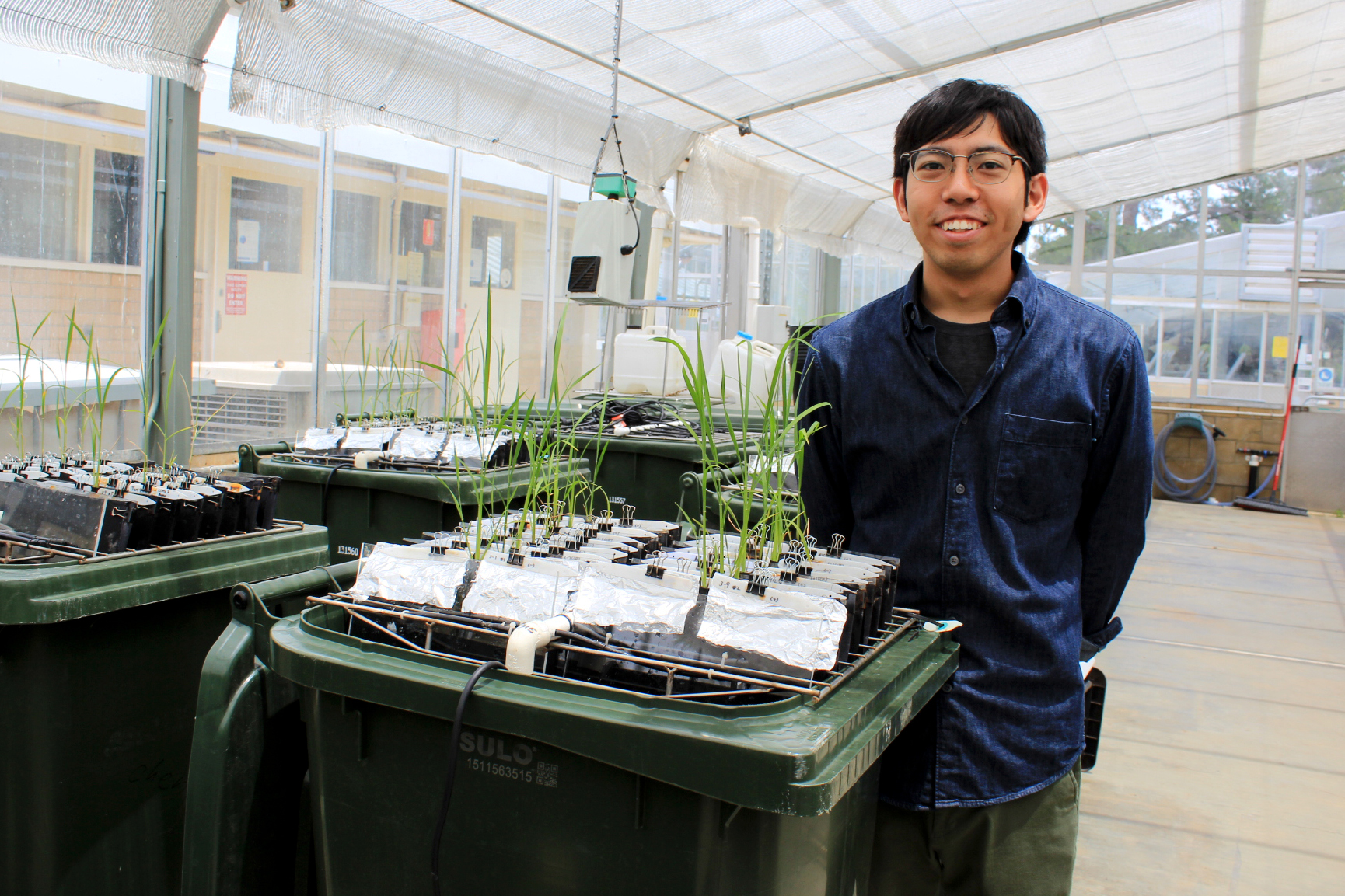Researchers from The University of Western Australia’s Institute of Agriculture and Nagoya University in Japan have uncovered new insights into the way rice plant roots adapt to environmental stresses, such as soil compaction and drought.
The study, published in the journal PNAS, was undertaken by PhD candidate Tsubasa Kawai as part of the joint Doctor of Philosophy degree program between UWA and Nagoya University.
In recent years, ‘phenotypic plasticity’ (the ability to change in response to stimuli or different conditions) has received attention for improving plant adaptation to variable environments.
In general, rice and cereal plants develop different types of lateral roots (LR), which increase the surface area of the plant’s root system.
Despite the importance of plastic LR development under variable water conditions, the molecular mechanisms regulating LR types were unknown.
For this study, the researchers unravelled the regulatory mechanism of LR ‘primordium’ (the earliest stage of development) size in rice – which is an important determinant of LR type.
Mr Kawai is completing his PhD thesis under the joint coordinating supervision of The UWA Institute of Agriculture Director Hackett Professor Kadambot Siddique and Nagoya University Professor Yoshiaki Inukai.
 Image: UWA-Nagoya University joint PhD candidate Tsubasa Kawai with his experiment.
Image: UWA-Nagoya University joint PhD candidate Tsubasa Kawai with his experiment.
Professor Siddique said rice fed more than half of the world’s population and was an integral source of income for most people in Asia and Africa.
“Roots are directly associated with soil, water, and nutrient uptake, anchoring plants in the substrate, interacting with plant microbes, and storing resources,” he said.
“Therefore, root architecture greatly contributes to crop yield.
“Our findings form the basis for selecting and breeding root phenotypic plasticity in order to achieve greater sustainable rice production under variable environments.”
The UWA-Nagoya University joint PhD degree program provides an opportunity for students and staff to develop strong research relationships, which will result in long-term professional networks and the publication of new research.
Students in the program are simultaneously enrolled at both universities, and complete part of their degree at each institution.
Media references
Rosanna Candler (Communications Officer, The UWA Institute of Agriculture) +61 08 6488 1650
Hackett Professor Kadambot Siddique (Director, The UWA Institute of Agriculture) +61 08 6488 7012
